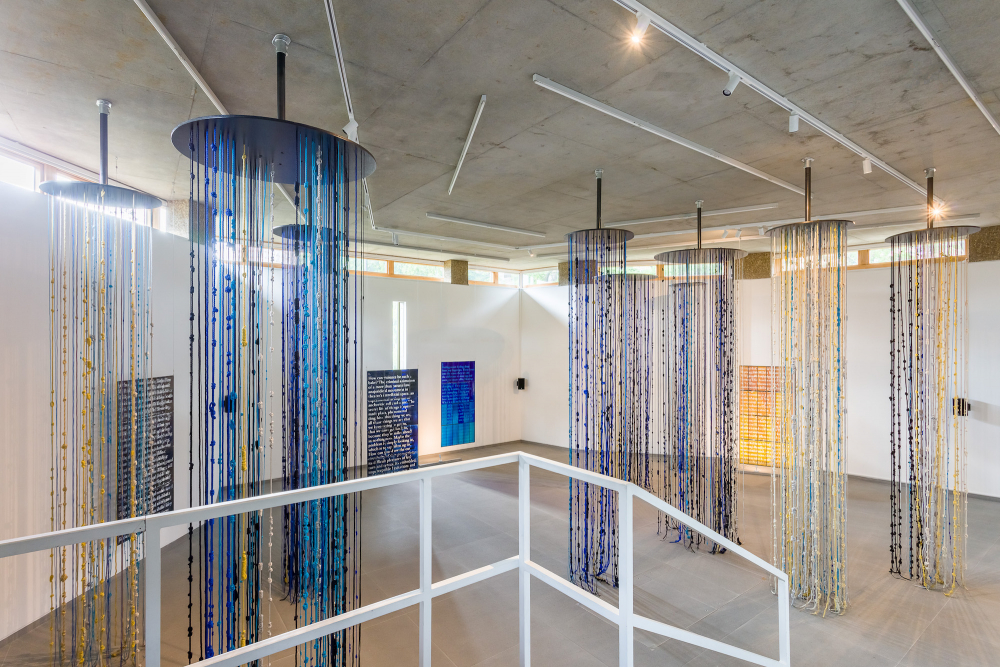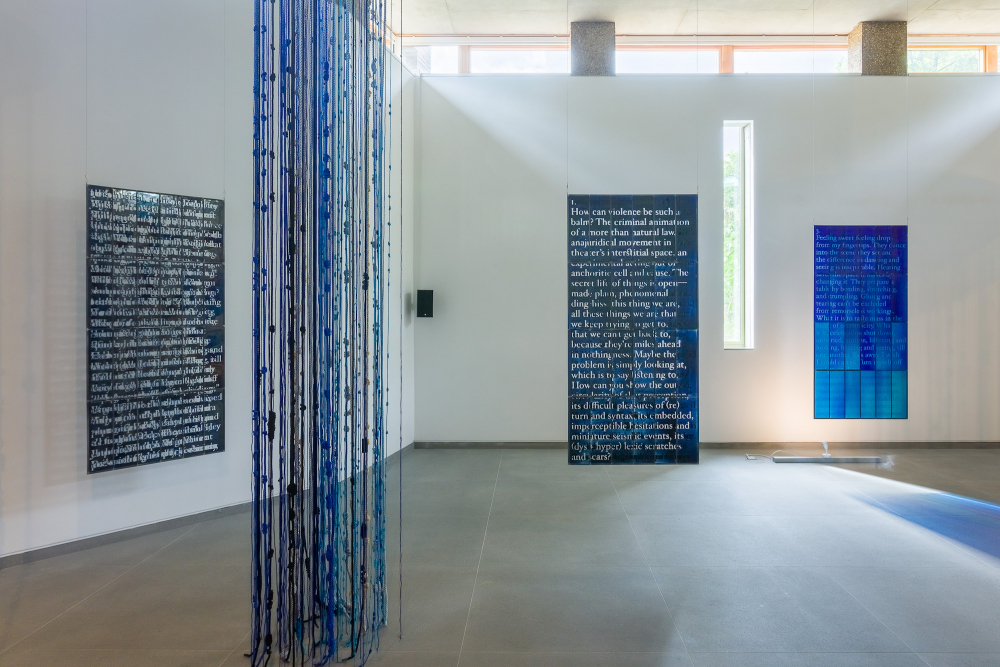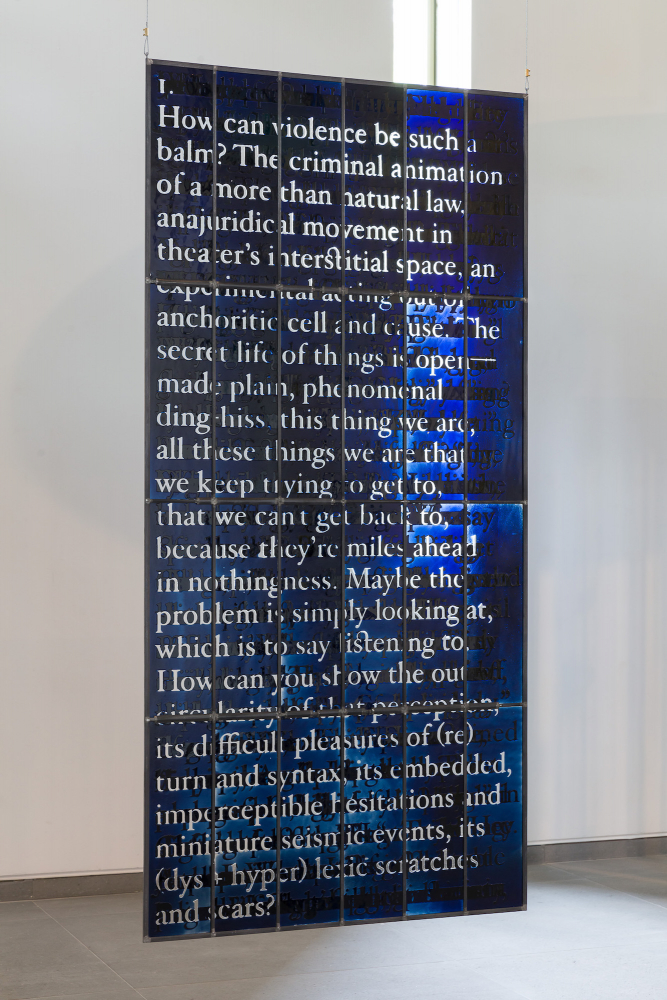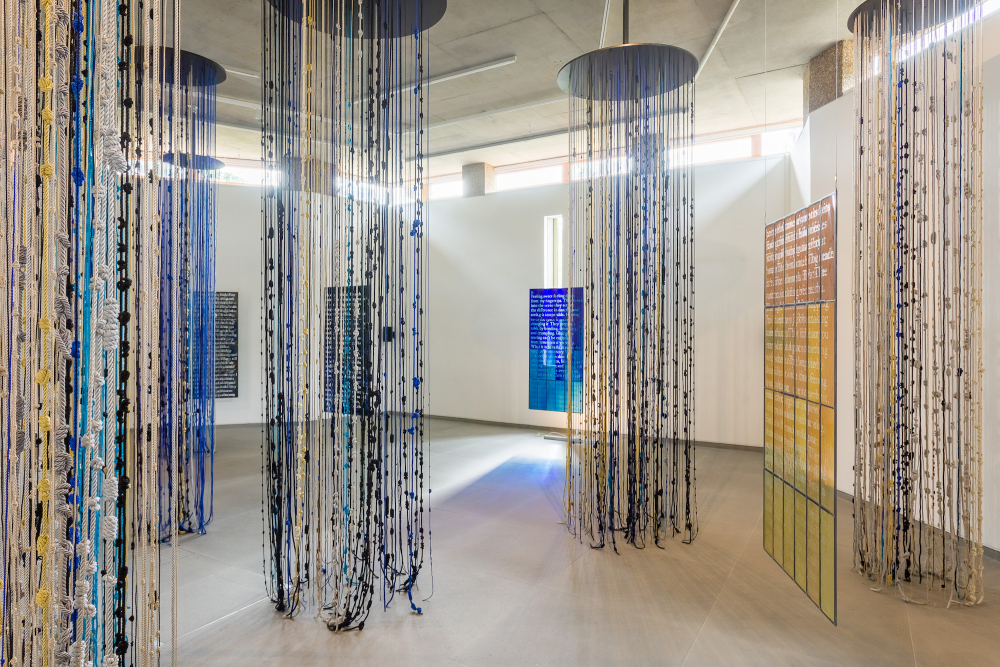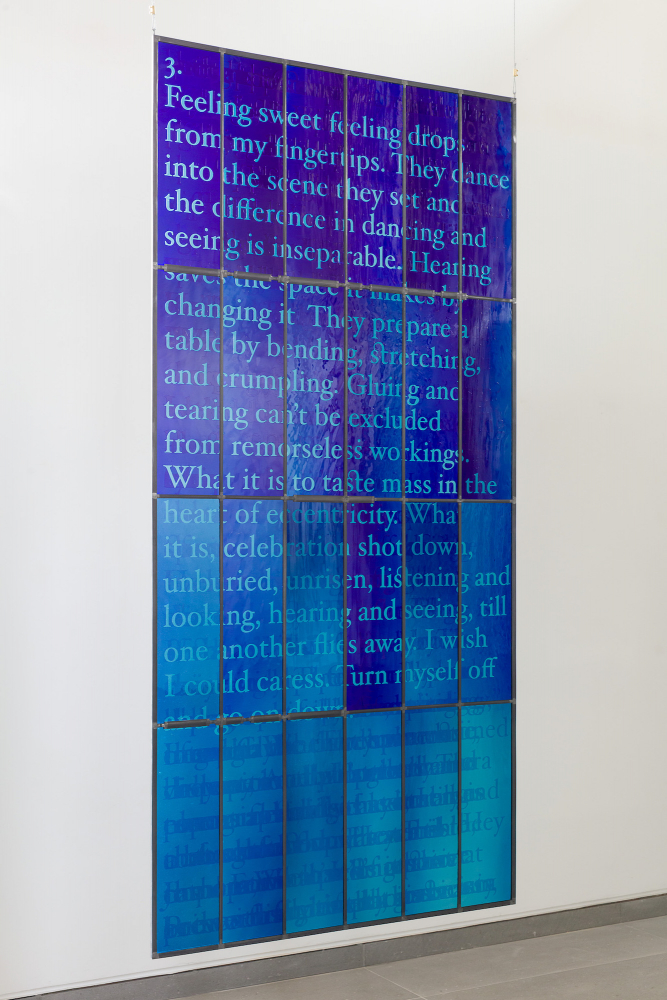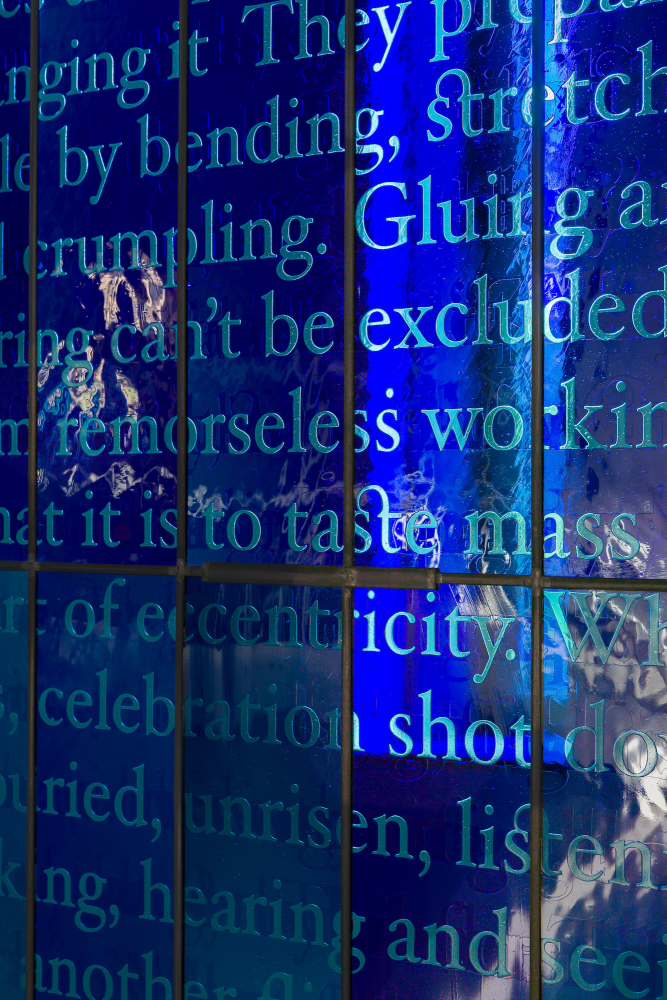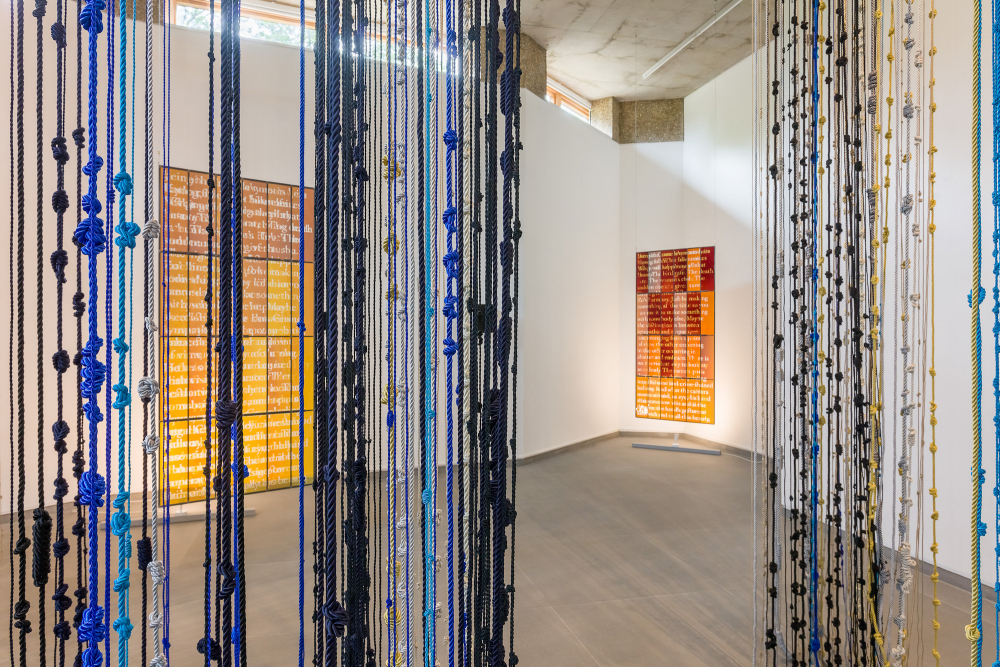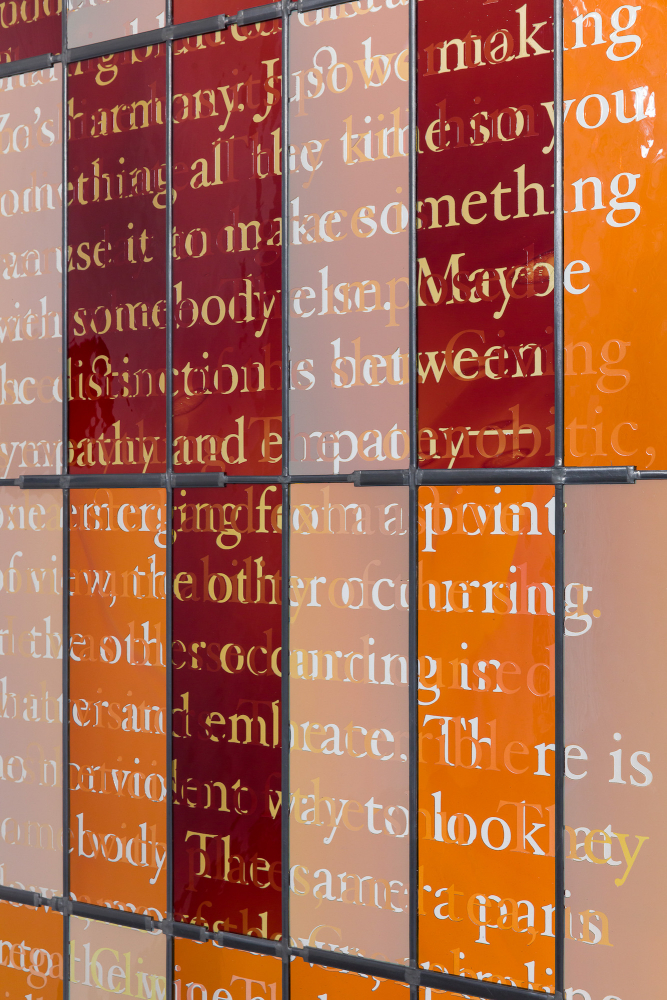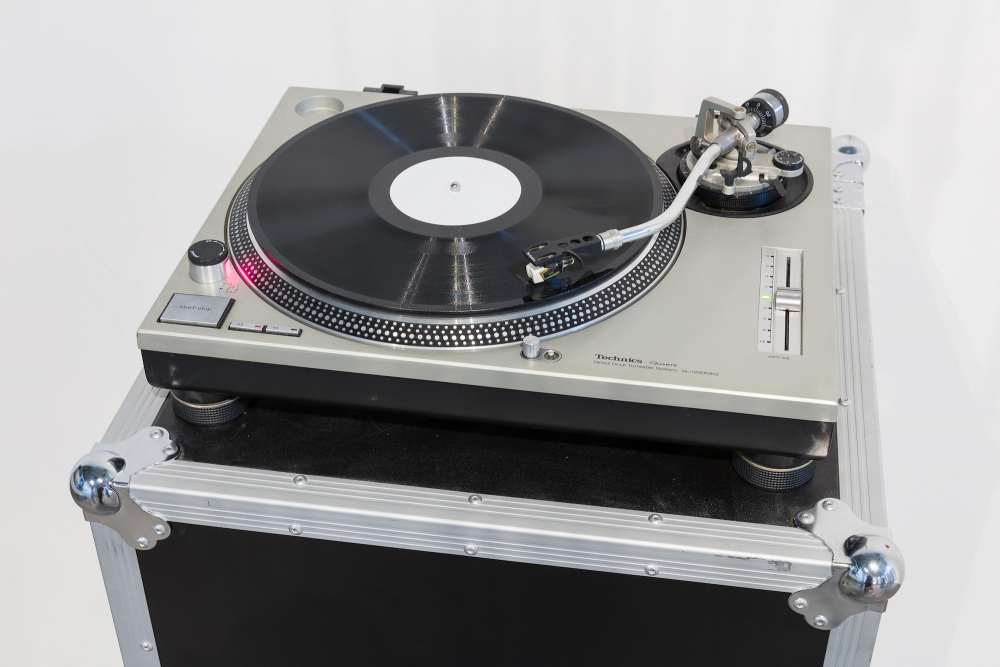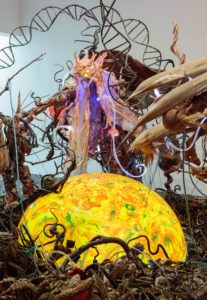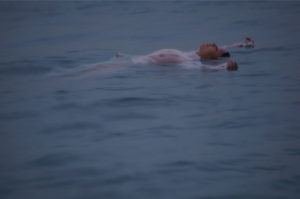Long, knotted ropes hang from the ceiling at Wu Tsang’s An Atmosphere of Messages solo exhibition incorporating work made in collaboration with a larger ensemble of poets, musicians and artists. Rotating on an axis, ‘Gravitational Feel’ invites visitors to touch and move in their embrace. Between the tied, quipu-esque strings, stained-glass windows hang in parts of London’s Cabinet Gallery, from May 25 to July 20, acid-etched with ‘chapters’ of layered poetry. A soundscape of the same name, ‘Sudden Rise’, emanates from an an audio dubplate where compositional encounters are taking place engulfing the gallery space.
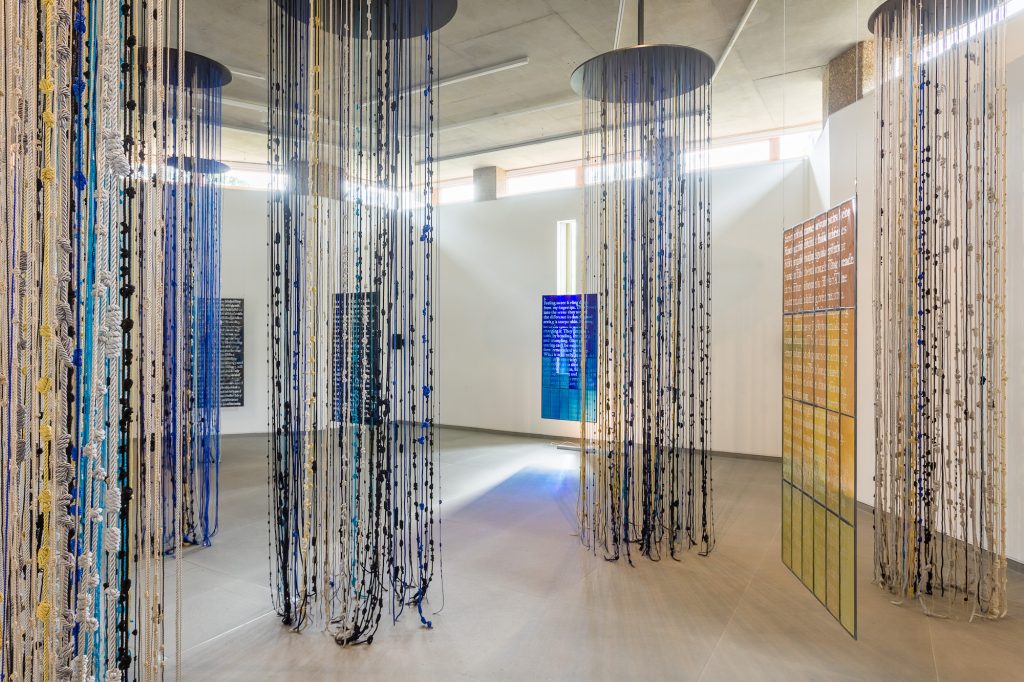
Part of an ongoing and unfolding project, ‘Sudden Rise’ is an extension of an improvisatory audio-visual performance by Tsang and Fred Moten at the Tate in 2017. It began as a collaboration with the poet and theorist, taking on its own life as part of an accumulated band in video, sound, and dance. Including artists such as boychild, Ashland Miles (Total Freedom), Klein and Asma Maroof, among others, it is part of an ensemble they’ve formed called Moved by the Motion. This multiple, multimedia approach to the aesthetic lends itself to media theorist Laura U. Marks’ idea of ‘haptic visuality’, where the filmic-image pertains to a larger affectability, pertinent perhaps as Tsang’s primary practice is film. Haptic here, as denoting touch or feeling, is perhaps trying to mediate a contemporary preponderance over embodiment and perception in our image-saturated times.
The acid-etched poetry of the ‘Sudden Rise’ chapters is described by Tsang in the exhibition text as “an instance of opacity, neither transparency nor obscurity. Seeing through as a kind of devotional feel/field. An image that might be moved through, vestibulary—an opening into our sociality beyond or underneath the image.” The use and privileging of the poetic seems concurrent with the preoccupation of devotion and ritual as guiding social concepts that ground Tsang’s aesthetic practice. The attention and overt connection between the practice of art and the practice of devotional life as a social endeavour puts Tsang and her milieu in a disjunctive genealogy of modernist and avant-garde practitioners.
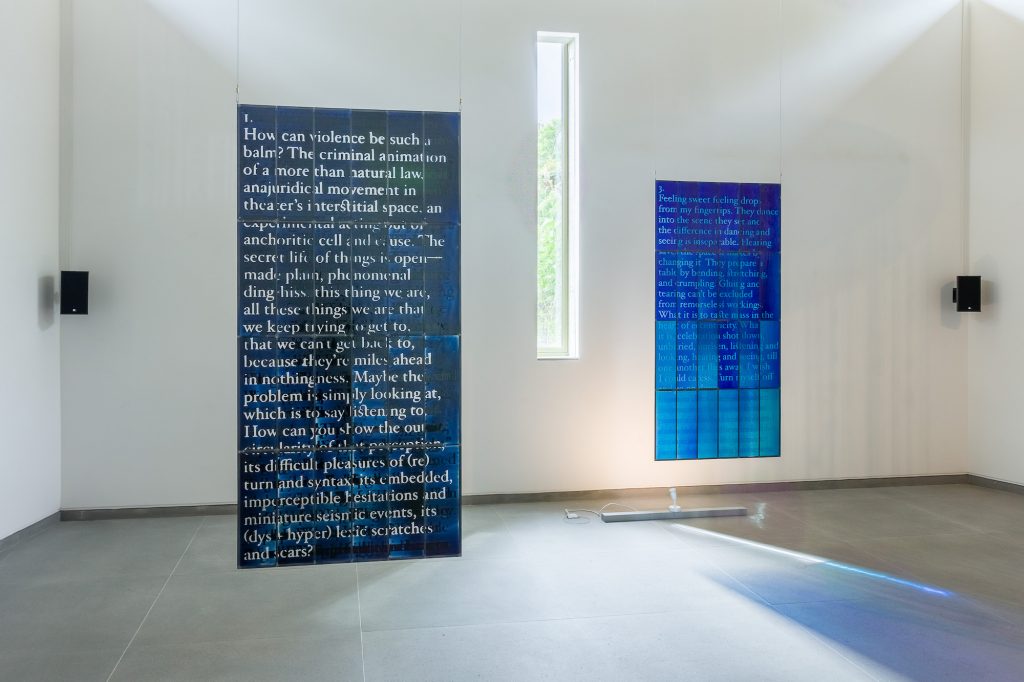
While tactile hapticality goes some way to frame this social and aesthetic movement, turning to Moten’s conception of the ‘blur’ can also offer some relief. In reference to Charles Gaines’ work in particular, Moten writes in Black and Blur of this blur as a “partition in refusal of partition; a general assertion of inseparability, which nevertheless still moves in and as a ubiquitous and continual differentiation; a breaking or cutting or scoring”. This kind of inseparability as continual differentiation is at play in particular with the ‘Sudden Rise’ dubplate, itself changing over the course of the exhibition with five new cuts. The acetate disc operates as something both fetishised and vestibular—an archaic object in an age of digital circulation where residues of devotion and ritual are inscribed as poetic and sedimented, particularly prevalent in forward-thinking contemporary music.
The larger critique of the An Atmosphere of Messages exhibition may really lie in what the stakes may be, and what the social is doing in global art worlds. Or put another way, the circulation of a particular set of fetishised socialities (read: queer, black) seems to make itself palatable and commodifiable to a bourgeois structure of the art institution in its insurgent opacity. The social in its continued formal abstractions is thus recomposed beyond its dissident performative blurring. Being moved by motion can in a sense be doubly decompositional; the way that the multi-formal ensemble in its haptic trappings offers a generative line of aesthetic practice, while simultaneously reifying a set of social relations for bourgeois subsumption. The challenge of and to Tsang and the rest remains in movement.**
Wu Tsang’s An Atmosphere of Messages is on at London’s Cabinet Gallery, running May 25 to July 20, 2019.
